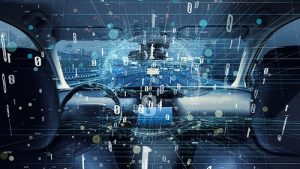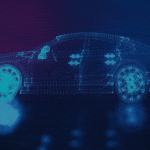Putting Humans at the Center of Design

“What’s the human thing to do here?” asks Daniel Hall, Toyota North America’s chief UX designer and chief engineer during his interview at Wards Intelligence FOCUS: Software Defined Vehicle.
Toyota North America’s chief UX designer says an industrywide shift is under way in how automakers work with their suppliers to develop software-defined vehicles engineered to meet consumer expectations.
As automotive development expands beyond early-stage, segmented-software capabilities, the industry is beginning to look at the ample in-vehicle features with a view to humanizing the driving experience, says Daniel Hall, Toyota North America’s chief UX designer and chief engineer.
 “What’s the human thing to do here?” Hall asks during an exclusive interview with Drew Winter, Wards Intelligence principal analyst-Cockpit of the Future.
“What’s the human thing to do here?” Hall asks during an exclusive interview with Drew Winter, Wards Intelligence principal analyst-Cockpit of the Future.
Answering that question and discussing its impact on the industry was the theme of the Wards Intelligence FOCUS: Software Defined Vehicle virtual content series. The May event took a deep dive into the evolving capabilities of OEMs and the impact of that change on their relationships with consumers and the supply chain in the software-defined era of automotive design.
Scaling back offerings, segmenting products by user type and predicted driving experience enables OEMs to redefine their brands by developing highly targeted products for a new generation of “connected consumers.” However, Hall says, “Technology is something that is for everyone,” and it is this targeted strategy that has enabled Toyota to become the world’s top-selling automaker.
OEMs have evolved beyond product manufacturers into defining brands within their consumers’ lifestyles. Knowing that your customer is a person, rather than a conglomeration of individuals with overlapping experiences and preferences, is key to success at the end stage of automotive’s metamorphosis into a software-defined industry.
“Our place in the world is to make great products that deeply consider the implications of the products in a moving vehicle, learn what it means to be safe, learn what it means to be exciting and find the overlap between the two,” Hall says.
Consumer demands are evolving rapidly, driven by a digital-first society. Providing the products and features necessary to stay ahead of the competition can be hard.
The question most automakers are considering: Should we develop software in-house? Hall tells the FOCUS: Software Defined Vehicle audience that’s exactly the direction Toyota is taking.
“We have to start staffing up at the OEM side,” he says. “We need designers and we need engineers…that traditionally came from Tier 1 suppliers.”
So, what does that mean for the automaker-supplier relationship?
The role of the automaker is being redefined into a digital-first approach. End users are receiving targeted product offerings, and the traditional supply chain is in flux as the industry evolves through the software-defined era. If this business model is to be replicated throughout the industry, structural adaptions to internal organizations and the supply chain must progress.
“There is an industrywide shift in how suppliers and automakers are working together,” Hall says. “There’s this renewed sense of responsibility for the end-to-end customer experience from the automaker.”



